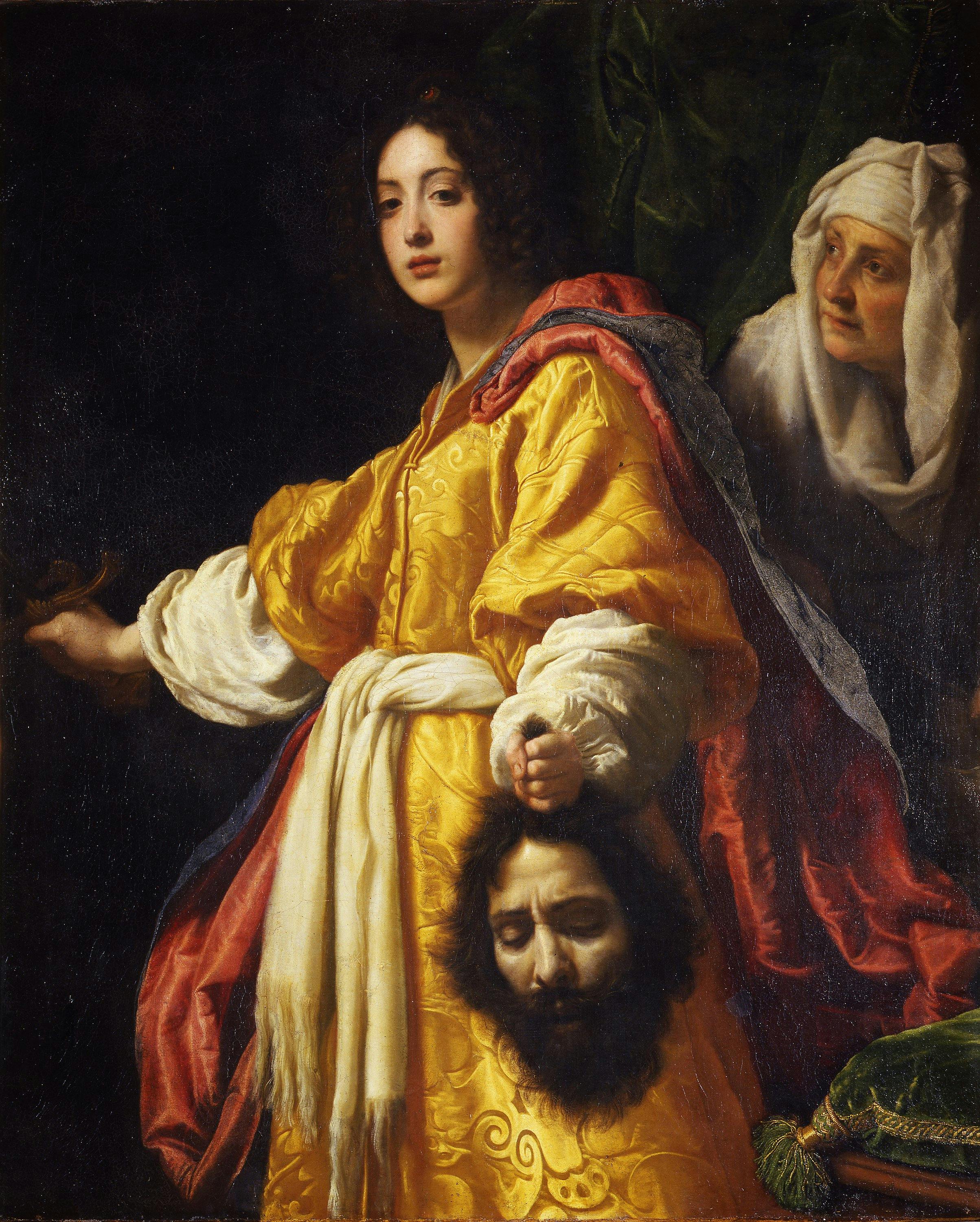Judith with the Head of Holofernes
Cristofano Allori (Firenze 1577-1621)
The most famous painting by Florentine artist Cristofano Allori, carried out between 1610 and 1612, became an instant success and was widely copied, due in part to the popularity of the legend of the biblical heroine Judith which the artist interpreted autobiographically; the decapitated head of Holofernes is a self-portrait while his lover Mazzafirra is portrayed in the beautiful face of the young woman, whose extraordinarily luxurious clothing is a direct tribute to the city's thriving textile industry. After the painter's death in 1621, the painting became part of the Medici collections and arrived at the Pitti Palace in 1666. This work by Cristofano acknowledges his influence from Caravaggio through the teachings of Artemisia Gentileschi who, in the same period in the service of the Medici family, painted two violent interpretations of Judith for Cosimo II (Gallery of the Statues and Paintings of the Uffizi, Room 90, Inv. 1890 n. 1567 and Palatine Gallery, Iliad Room, Inv. Palatina n. 398). Cristofano emphasizes the heroine's beauty, the candor of her skin tones and the exquisite quality of her clothing, contrasted against the horror of the decapitated head she holds in her hand. Judith appears proud of her deed and sure of her divine protection. The figurative theme of Judith and Holofernes was very popular in Florence, mainly thanks to the bronze sculpture by Donatello erected in the Piazza della Signoria in 1494 (now on display in the Hall of Lilies in the Palazzo Vecchio), and became a representation of guile, courage and faith in God, necessary virtues to gain freedom from any oppressor.
